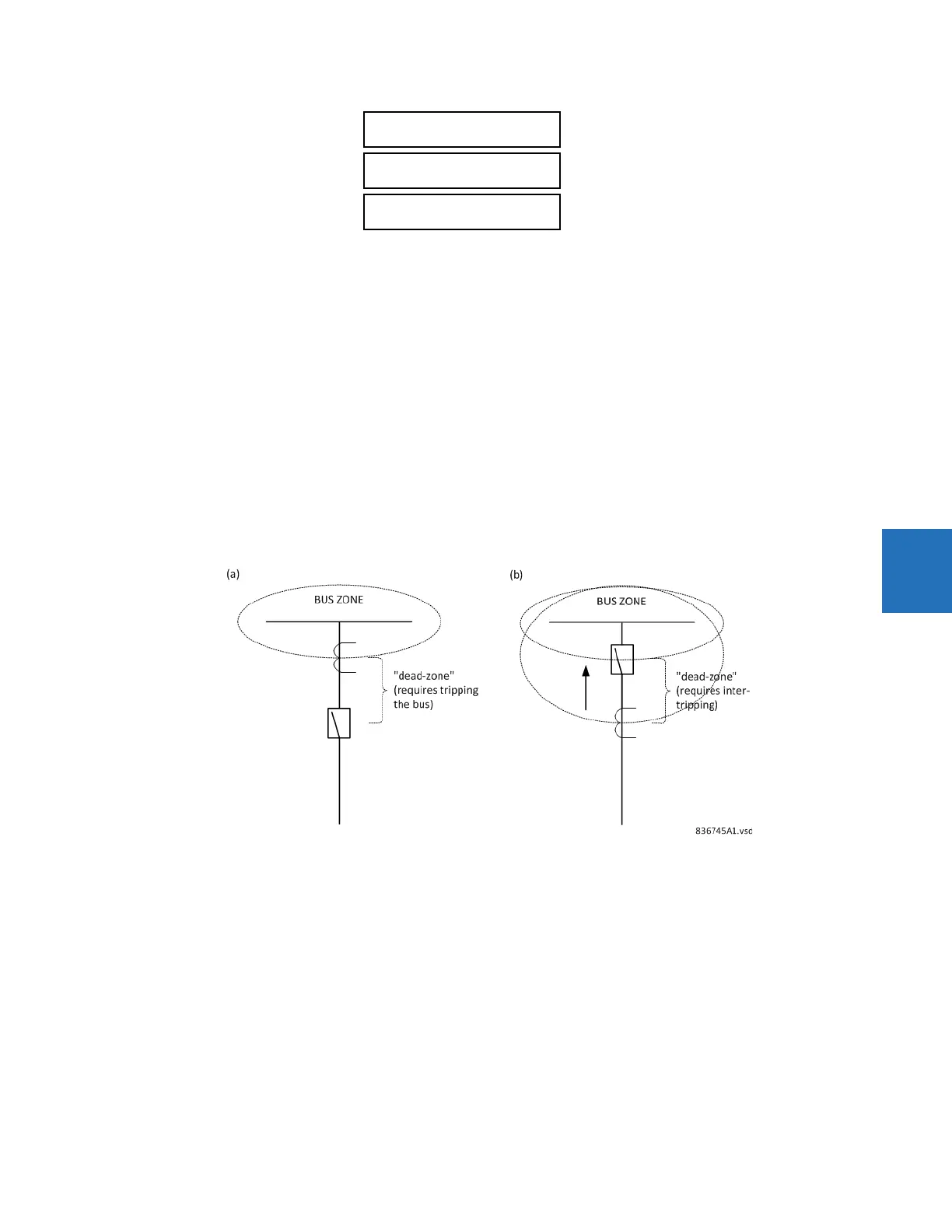CHAPTER 5: SETTINGS GROUPED ELEMENTS
B90 LOW IMPEDANCE BUS DIFFERENTIAL SYSTEM – INSTRUCTION MANUAL 5-177
5
The End Fault Protection (EFP) element operates for dead-zone faults; i.e., faults between the CT and an open feeder
breaker. Since a bus protection zone terminates on the CTs, faults between the CT and breaker require special
consideration.
With a bus-side CT (Part A of the figure below), a fault between the open CB and CT is outside the bus zone but can only
cleared by tripping the bus zone protection. In this case EFP trips the bus zone protection once the current exceeds a user-
programmable threshold, effectively clearing the fault.
With a line-side CT (Part B of the figure below), the zone is reduced once the breaker opens. Otherwise, the bus protection
may issue an unnecessary widespread trip in the case of a fault between the open CB and CT. The zone is shortened using
the breaker position with a short drop-out delay as a connection status for the associated current. Once the bus zone
moves and terminates on the CB, a dead-zone is created between the CB and CT. In this case, the EFP is used; upon
operation, the EFP will trip the remote breaker.
The EFP element arms when the feeder breaker opens and resets when a manual breaker CLOSE command is issued. To
avoid race conditions, a user-programmable time delay for the breaker OPEN signal is provided. Once armed, the element
operates when the current exceeds a user-programmable threshold. The output must be configured to either send an
inter-trip or trip the bus zone protection depending on the CT orientation with respect to the breaker.
Figure 5-93: Application of end fault protection element
EFP1 PICKUP — Specifies the current level recognized by an armed EFP scheme as fault current in the protected dead-zone.
Although it can be set very low (above the noise level), set above the maximum load current for extra security.
EFP1 BREAKER OPEN — This setting is a FlexLogic operand indicating an open breaker. The operand shall be "On" when the
breaker is open. Typically, this setting is a position of an appropriately wired input contact of the B90.
EFP1 BKR DELAY — This setting specifies a timed delay between the breaker position being declared as open by the EFP1
BREAKER OPEN setting and the moment the EFP scheme is armed. Set this delay long enough to avoid spurious operation
due to a delay between the breaker position and decaying of the breaker current. The current ramp down period of the
B90 for the purpose of setting the EFP is 1.3 of a power system cycle.
EFP1 MANUAL CLOSE — This setting is a FlexLogic operand indicating a close command for the breaker. This operand shall
be "On" when the breaker is ordered to close. Typically this setting is a position of an appropriately wired input contact of
the B90.
EFP1 BLOCK:
Off
Range: FlexLogic operand
EFP1 TARGET:
Self-reset
Range: Self-reset, Latched, Disabled
EFP1 EVENTS:
Disabled
Range: Disabled, Enabled
